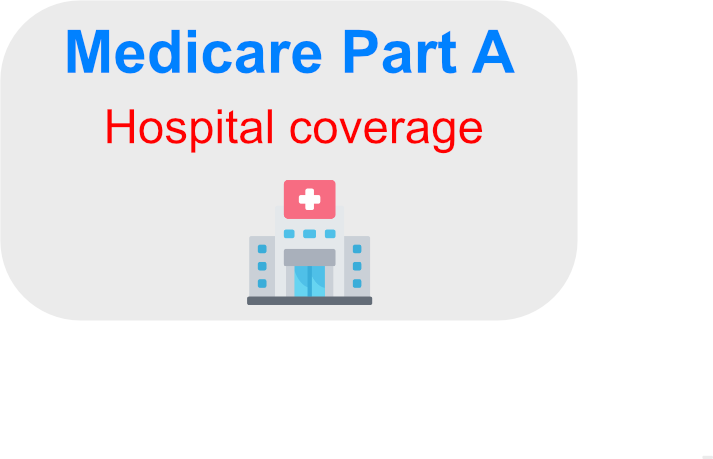Medigap Plan G in 2024 - What You Need to Know
Navigating the world of Medicare can be challenging, but understanding Medigap Plan G can make a significant difference in how you manage your healthcare costs.
This comprehensive guide outlines everything you need to know about this popular Medicare supplement plan, from its coverage details and cost factors to how it compares to other plans and much more.

Are you ready to gain peace of mind and make informed decisions about your healthcare?
Let’s dive in!
Short Summary
- Medigap Plan G offers comprehensive coverage for medical expenses, with minimal out-of-pocket costs and comparatively lower premiums.
- When considering Medigap Plans G and F, it is important to consider differences in coverage, premiums, and medical needs.
- We can help you compare plans to find the best option by evaluating their cost & coverage as well as factors influencing premium rates.
What is Medigap Plan G?
Medigap Plan G is one of the 10 Medicare Supplement policies that provide additional coverage to supplement Original Medicare, Parts A, and B.

Offered by private health insurance companies, Plan G boasts comparatively lower premiums and minimal out-of-pocket expenses for beneficiaries.
Once you meet the annual deductible, all additional medical expenses will be completely covered for that year under the Medicare Supplement Insurance Plan G.
Plan G is a great choice for seniors who want to lower their out-of-pocket medical expenses when they are registered with Medicare. It significantly reduces the costs for them.
While Medigap Plan G offers comprehensive coverage, you might want to explore other Medicare Supplement Insurance options such as Medigap Plan N or the High Deductible Plan G.
Each plan offers varying levels of coverage and costs, so it’s essential to understand these differences and choose the one that best suits your needs.
Coverage Details of Medicare Supplement Plan G
 Plan G provides extensive coverage for nearly all out-of-pocket costs associated with services and treatment after the Medicare Part B deductible has been paid.
Plan G provides extensive coverage for nearly all out-of-pocket costs associated with services and treatment after the Medicare Part B deductible has been paid.
This means that no copays or coinsurance are required.
Plan G covers most remaining costs after Medicare pays its share, in addition to certain expenses related to Medicare policy, including the Part A deductible.
As part of America’s health insurance plans, Plan G is accepted nationwide, including in your home state.
However, there are a few exceptions to Plan G coverage.
Medicare Plan G does not cover medical services such as outpatient care, preventive care, and ambulance services until the Part B deductible is reached.
Additionally, Plan G covers excess charges, which are when doctors charge up to 15% more than the Medicare-approved amount for services or procedures.
Exceptions to Plan G Coverage
While Medigap Plan G offers a wide range of coverage, it is important to note that some services are not included.
For example, Plan G does not cover routine dental, vision, hearing, or prescription drug services.
These additional benefits and services require separate plans to ensure comprehensive healthcare coverage.
 In addition to the services mentioned above, Plan G does not cover the Part A deductible of $1,600 for 2023.
In addition to the services mentioned above, Plan G does not cover the Part A deductible of $1,600 for 2023.
This is an important consideration when evaluating the overall cost and coverage of your healthcare plan.
Cost Factors for Medicare Supplement Plan G
The cost of Medicare Supplement Plan G varies according to age, location, tobacco use, and gender, with premiums ranging from $100 to $300 per month.
A high deductible option is also available, providing the same benefits as other plans but at a lower monthly premium in exchange for a higher deductible that must be met before receiving 100% coverage.
It is essential to consider these factors when evaluating Plan G costs, as they can significantly impact your monthly premium.
By understanding these variables and comparing rates among different carriers, you can find the most suitable and cost-effective Medicare Supplement Plan G for your needs.
Enrolling in Medigap Plan G: Timing and Process
In order to qualify for Medigap Plan G, you must already have Medicare Part A and B coverage. Without both of these parts, you would not be eligible for this plan.
Individuals can enroll in Medicare and Medigap Plan G up to three months prior to turning 65, and the window extends for seven months.

Additionally, open enrollment season, which runs from October 15th to December 7th annually, allows individuals to sign up for or make changes to their Medicare insurance, such as adding Plan G.
Enrollment periods and pre-existing conditions may affect your eligibility for Medigap Plan G.
For those switching from Medicare Advantage, underwriting health questions may be necessary.
It is crucial to understand these requirements and their potential impacts on eligibility to ensure a smooth enrollment process.
Comparing Medigap Plans: Plan G vs. Plan F
When comparing Medigap Plan G and Plan F, it’s important to understand the differences in coverage and premiums.
Plan F provides complete coverage for the gaps in Medicare, whereas Plan G offers nearly the same coverage as Plan F, apart from the Part B deductible of $233.
This makes Plan G a viable alternative to Plan F’s comprehensive healthcare coverage, making it a suitable choice for individuals with significant health issues or high medical expenses.

In terms of cost, if the additional expense for Plan F exceeds the Part B deductible of $226 in 2023, then Plan G is the more cost-effective option.
Ultimately, choosing between Plan G and Plan F should be based on your healthcare needs and the frequency of your medical visits.
Compare Plans & Rates
Enter Zip Code
Medicare Plan G vs. N
While Plan G offers more comprehensive coverage than Plan N, including expenses related to Medicare Part B excess charges, Plan N has cheaper rates.
However, Plan N requires copays for certain medical office and emergency department visits, which may be a consideration when deciding between the two plans.
Plan N may be the more suitable choice for you if you have a limited number of medical office and emergency department visits.

It could save you money in the long run. However, if you require more comprehensive coverage and can accommodate the higher premiums, Plan G might be the better option.
Medicare Advantage vs. Medigap Plan G
Medigap Plan G differs from Medicare Advantage in that the latter becomes the primary insurance and may restrict access to specialists.
This means that, with Medicare Advantage, you may not have the same level of flexibility and choice in selecting healthcare providers as you would with Medigap Plan G.
When determining whether Medicare Supplement Plan G or Medicare Advantage is the most suitable option, it is essential to have a comprehensive understanding of each plan type.
By weighing the pros and cons of both options, you can make an informed decision about which plan best meets your healthcare needs.
Carriers Offering Medicare Supplement Plan G
Medicare Supplement Plan G is offered by various carriers, including Mutual of Omaha, Aetna, and Humana, among others.
When searching for a suitable carrier for Medicare Supplement Plan G, it is essential to evaluate the coverage and cost of the plan from various carriers.
We offer numerous highly rated alternatives to select from, making it easier for you to find the right plan for your needs.
By comparing the coverage and cost of each plan effectively, you can make an informed decision about which carrier and Medigap Plan G option is best for you.
Medigap Plan G for Beneficiaries Under 65
While federal law does not require Medicare Supplement Plan G for beneficiaries under 65, some states require insurers to offer at least one Medigap plan to those under 65, and some carriers allow enrollment in Plan G.
State requirements and potentially higher premiums due to a disability should be considered when evaluating the availability of Plan G for beneficiaries under 65.
It is important to research the specific regulations in your state regarding health screenings, rates, and Open Enrollment for Medicare enrollees under the age of 65.
This will ensure that you have accurate information regarding your eligibility and the available options for Medigap Plan G.
Additional Benefits and Services Not Covered by Plan G
 While Medigap Plan G offers extensive coverage for many healthcare expenses, some additional benefits and services are not covered by this plan.
While Medigap Plan G offers extensive coverage for many healthcare expenses, some additional benefits and services are not covered by this plan.
For example, Plan G does not cover routine dental, vision, hearing, or prescription drug services.
These additional benefits and services require separate plans to ensure comprehensive healthcare coverage.
It is essential to be aware of these limitations when selecting a Medigap plan and to consider supplemental coverage for these services if they are important to your healthcare needs.
Rate Increase History and Factors Affecting Premiums
The rate increase history for Medicare Supplement Plan G is typically 2-6% annually, and carrier selection is an important factor in determining premiums.
Factors such as age, location, and the insurance company all play a role in determining the rate increase history and premium amounts for Plan G.
When selecting a Medigap Plan G, it is important to research carrier reviews and compare rates among different carriers to find the most suitable plan for your needs.
This will help you make an informed decision and secure the most advantageous Medicare rate.
How to Compare and Choose the Best Medigap Plan G Option
Comparing and choosing the best Medigap Plan G option can be made easier with our help. Our service is FREE. To get started call us today at 1-888-891-0229.
By providing a side-by-side plan comparison from top carriers, you can evaluate the coverage and cost of each plan effectively, ensuring that you select the best option for your healthcare needs.
Remember, all Plan G plans have the same fundamental benefits.
By comparing the coverage and cost of each plan, as well as evaluating the rate increase history and factors influencing premiums, you can make an informed decision about the most suitable Medigap Plan G for you.
Frequently Asked Questions
What is a Medigap plan G?
Medigap Plan G is a popular Medicare supplement insurance policy that helps cover the gaps in Original Medicare.
It pays for most of the out-of-pocket costs not covered by Part A and B, such as the Part B deductible, coinsurance, and copayments.
What does Medigap Plan G not cover?
Medigap Plan G does not cover long-term care, vision or dental care, hearing aids, eyeglasses, private-duty nursing, or services received outside the United States. These are services that must be paid for out-of-pocket.
It is important to understand what is and isn’t covered by your Medigap plan so you can plan accordingly.
What does Plan G cover?
Plan G is an excellent choice for those who want the most comprehensive coverage while avoiding a hefty premium.
It covers Medicare Part A and Part B copays and coinsurance, Skilled Nursing and rehab facility stays, and Hospice care, and it also shields you from balance billing or excess charges.
How much is Plan G for 2024?
Medicare Plan G rates vary based on age, zip code, gender, tobacco use, and if any household discounts apply. Fill out the form to the right to see rates in your area for Plan G from top insurance companies.
What is Medicare Plan G?
Medicare Supplement Plan G is an affordable option for those looking for comprehensive coverage of out-of-pocket costs associated with Original Medicare.
It covers all of the benefits included in Plans A, B, and C, except for the Part B deductible.
Plan G is a great fit for those who are comfortable paying their Part B deductible on their own.
Start Searching for Medigap Plan G Insurance Today!
Understanding Medigap Plan G is crucial in managing your healthcare costs and ensuring that you have comprehensive coverage.
By evaluating the coverage and cost of various plans, comparing carriers, and considering your specific healthcare needs, you can make an informed decision about the best Medicare Supplement Plan G option for you.
With the right plan in place, you can enjoy peace of mind, knowing that you have taken control of your healthcare journey.

Updated December 4th, 2022

